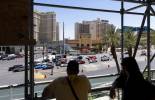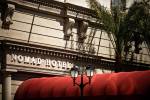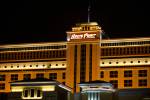West Las Vegas ready for economic revival
Once upon a time, Las Vegas had two Strips -- one on either side of railroad tracks that split the city into east and west.
"At the same time you have the El Rancho and the Last Frontier, you also have clubs going up on the west side" on and around Jackson Avenue, said Claytee White, who directs the Oral History Research Center at the University of Nevada, Las Vegas.
"Not as elaborate, because people couldn't get the funding. But they did what they could."
West Las Vegas, as the neighborhood came to be known, was the focal point for the black community in the days before desegregation, and Jackson Avenue was the main drag.
"Jackson was kind of the Strip, or Glitter Gulch, of black Las Vegas," said Michael Green, a professor at the College of Southern Nevada. "If you were African-American, you most of the time couldn't go into a Strip or downtown property.
"By the late '50s, the segregated community had its own doctor, its own dentist, its own bank. That extended to having little casinos -- little in comparison to today's casino, but not that much smaller than what was downtown."
They included Club Alabama (1943); the Cotton Club (1944); the Green Lantern (1945), which was supplanted by Club Ebony in 1948; and the El Morocco, which opened in 1945 on E Street. The Cove Hotel was owned by boxer Joe Louis, making it one of the few black-owned hotels in Las Vegas at the time.
Black entertainers of the day stayed in that part of town, since they weren't allowed rooms in the hotels where they performed every night, White said. But when they finished those shows, they'd perform on the west side after hours.
"The community got to see the same entertainment the people on the Strip got to see, but it was probably free of charge," White said.
Segregation began to crack in the 1950s, and continuing civil rights successes in the 1960s ended up dispersing the black population.
"We were too successful," Green said, paraphrasing the words of local civil rights leader James McMillan:
"Integration was necessary. But if you were African-American, you didn't have to live in West Las Vegas now. You didn't have to gamble or dine there. It didn't eliminate all the money or people, but it did damage the economy of that area."
While that damage is still apparent, there are signs of new investment. Developers will present plans for a rebuilt Moulin Rouge hotel-casino at Thursday's meeting of the Las Vegas Planning Commission.
The hotel had a brief but famous run in 1955 as the city's first explicitly nonsegregated resort. Plans for the property on Bonanza Road, within walking distance of the old Jackson Avenue Strip, call for 1,700 hotel rooms and a 72,000-square-foot casino.
There's also road work coming on Martin Luther King Boulevard, and plans for apartments at Jackson and H Street.
"My vision is to increase the rooftops in that area, to bring back the single-family detached housing that this area is in need of," said Councilman Ricki Barlow, who represents the area. "We have so many vacant pieces of land and so many boarded-up houses."
He said the area is "turning a corner," and White agreed.
"I think the area will come back," White said. "I've seen a sketch of what they're going to do with the Moulin Rouge, and it looks very promising."
Contact reporter Alan Choate at achoate @reviewjournal.com or (702) 229-6435.























